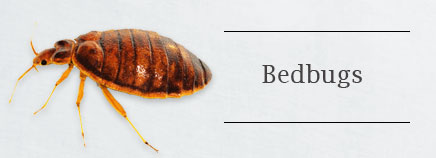
Not long ago, “sleep tight, don’t let the bedbugs bite” was just a sweet rhyme parents said to their kids when tucking them into bed.
But recent infestations of bedbugs in even the cleanest hotels and homes have people on high alert, checking mattresses and furniture for telltale signs of these irritating, hard-to-control pests.
Bedbug Basics
Bedbugs are small, flat, reddish-brown bugs about the size of an apple seed. They can be found all over the world. Bedbugs hide during the day in or around beds and crevices in chairs, couches, curtains, rugs, dressers, and even in cracks of walls and floors and behind wallpaper.
They come out at night to find food, which in their case means blood. Bedbugs have a special ingredient in their saliva (spit) that keeps blood from clotting while they feed, typically at night in areas where people sleep. After their blood meal, bedbugs don’t stay on a person for long. Instead, they hide nearby, often in clothing or luggage, allowing them to spread when belongings move to another location.
A person does not usually feel the actual bedbug bite. But after a person is bitten, the bite will feel itchy. Bedbug bites look like little red bumps (similar to mosquito bites) and they can sometimes occur in a line on the body.

Travel Tips
Since you’re more likely to encounter bedbugs while traveling than in your home, it’s wise to plan ahead. A number of websites let travelers search for bedbug infestation reports by city (and sometimes by hotel), so do a little research before you leave home.
Once at your destination, do a bedbug check of every room before settling in. You probably won’t see the bedbugs themselves, but certain telltale signs can alert you to their presence. Pull back sheets to look for little spots of blood on mattresses, or remove the sheets and look on and under the mattress, especially around its seams (also check headboards and footboards).
If you find any signs of bedbugs, ask for other rooms and inspect them, too. If you still see signs of bedbugs, find another place to stay.
Once in your room, keep luggage off the floor and beds — use the luggage racks most hotels and motels provide or put suitcases on a table or desk. Hang up clothes whenever possible, and when you get back home, dump dirty clothes right into the washing machine.
Prevention
People are finding bedbugs in their homes more than in years past. The bugs can hitch a ride home when you travel, or even after a trip to your local movie theater.
Be careful when you buy used clothing or furniture from garage sales or thrift stores. Always inspect them for bedbugs. Also, don’t grab a discarded couch or other upholstered furniture off the street corner. They might have bedbugs hiding in the fabric. In fact, that might be why the previous owner got rid of them!
If you or your child have been in a place known to have bedbugs, make sure to wash your clothes with hot water when you return home. If you can’t wash your clothing right away, put it in a sealed plastic bag until you can wash it.
Treatment
If you think someone in your family has been bitten by a bedbug, wash the bites with soap and water. Using calamine lotion, an anti-itch cream, or cool compresses can help with the itching. In some cases, an antihistamine by mouth can ease itching. Bites clear up in 1-2 weeks.
Tell kids not to scratch a bedbug bite because doing so can cause a skin infection, such as impetigo and, rarely, cellulitis. If an infection does happen, a doctor will prescribe antibiotics to treat it.
Tackling Bedbugs
If your home has bedbugs, don’t feel bad. Bedbug infestations are common. These tips can help:
- Keep your home uncluttered so bedbugs won’t have places to hide.
- Change bedsheets once a week and vacuum floors regularly.
- If you find bedbugs, wash all bedding, clothing, stuffed animals, etc., in hot water and dry on a hot setting.
- If your mattresses have bedbugs, buy a mattress cover that’s labeled “anti-allergy” or “anti-dust mites” to help prevent the bugs from getting into your bedding.
You also can contact local pest control companies to ask about ways to exterminate bedbugs with or without pesticides.

